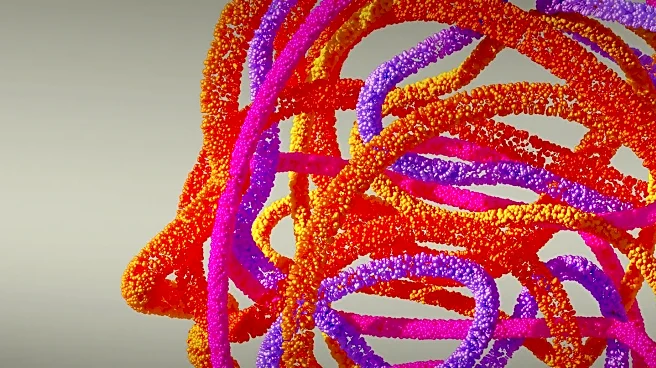What's Happening?
Synnovation Therapeutics has announced the presentation of initial results from a Phase 1 trial of SNV1521, a CNS-penetrant PARP1-selective inhibitor, at the European Society for Medical Oncology (ESMO) Congress 2025. The trial demonstrated encouraging
anti-tumor activity and a differentiated safety profile. Patricia LoRusso, D.O., Ph.D., from Yale Cancer Center, will present the findings, highlighting the potential of SNV1521 as a best-in-class agent. Additionally, Synnovation has entered a clinical collaboration with DualityBio to evaluate the combination of SNV1521 with Duality’s HER3-directed antibody-drug conjugate, DB-1310, aiming to demonstrate synergistic efficacy and improve patient outcomes.
Why It's Important?
The development of SNV1521 represents a significant advancement in cancer treatment, offering a promising alternative to first-generation PARP inhibitors by mitigating hematologic and GI toxicity. The collaboration with DualityBio to combine SNV1521 with DB-1310 could enhance therapeutic efficacy, addressing the unmet needs of patients with advanced solid tumors. This partnership underscores the potential for innovative combinations in precision medicine, aiming to improve survival rates and quality of life for cancer patients.
What's Next?
The collaboration between Synnovation and DualityBio will focus on evaluating the combination therapy's safety and efficacy in clinical trials. The results from these studies could pave the way for new treatment protocols and potentially lead to regulatory approvals. The ongoing research and development efforts will be crucial in determining the long-term impact of these therapies on cancer treatment landscapes.
Beyond the Headlines
The collaboration highlights the growing trend of combining targeted therapies to overcome resistance and improve outcomes in oncology. The ethical considerations of balancing efficacy with potential side effects remain a critical focus, as researchers strive to develop treatments that offer maximum benefit with minimal risk.













